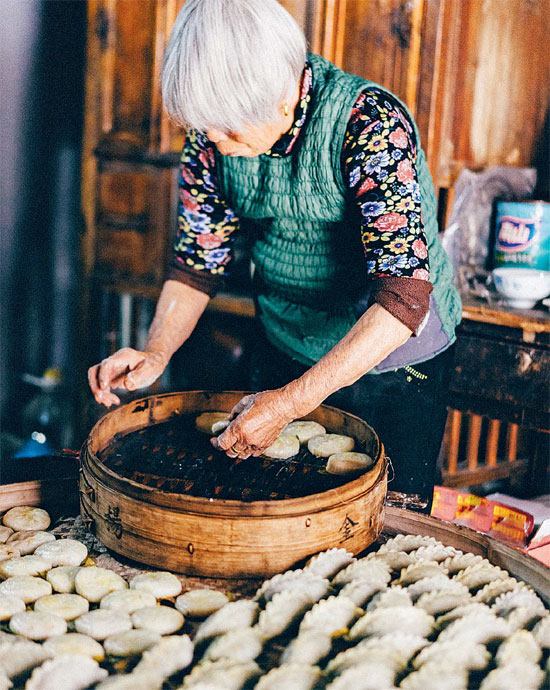Deciphering dumplings
By Sun Jiahui (China Daily Europe) Updated: 2017-04-02 11:43A tomb-sweeping dish of mugwort and red bean marks day of homage to ancestors
It's time to sweep some tombs and eat some dumplings.
The Qingming Festival falls on April 4 this year. It is a day for paying homage to ancestors. But frankly, as living, hungry people, we are more excited about the special dumplings.
Known also as qingtuan (青团), these green dumplings are made of glutinous rice mixed with Chinese mugwort leaves and are usually filled with sweet red bean paste. Edible when they are young and fresh, mugwort leaves are burned to repel mosquitos, used to treat minor swelling and are even said to ward off evil.
|
Qingtuan, or green dumplings, are made of glutinous rice mixed with Chinese mugwort leaves and are usually filled with sweet red bean paste. Zhang Demeng / The World of Chinese |
Before modern medicine, boiled mugwort leaves were regarded a great disinfectant, and washing your feet in warm mugwort-leaf water was also believed to bring a good night's sleep. In traditional Chinese medicine, the leaves are prescribed to repel “cold” and “damp” inside the body - just what you want on a spring day.
To make this snack, local people mash fresh mugwort leaves and mix them with flour. Then, a sweet filling of red bean is wrapped into the dough. After steaming, the Qingming dumpling becomes soft and delicate, with a mellow taste.
The snack is said to have been invented during the Taiping Rebellion, a massive revolt against the Qing government led by the Heavenly Kingdom of Peace. Around the Qingming Festival, one of the rebel generals of the Heavenly Kingdom of Peace, Li Xiucheng (李秀成), was hidden by a helpful farmer who disguised him as a humble farmhand. When the Qing soldiers couldn't find Li, they surrounded the village and built checkpoints to screen every traveler just in case anyone was sending food to him.
But the farmer came up with an idea: boil mugwort leaves and add them into sticky rice flour to make green rice balls that can be hidden easily in a basket of grass. In the end, Li got his dinner.
Today, the Qingming dumpling, mostly prepared and consumed as a street food in Southern China, is sometimes seen in stores in packaged form. Those living south of the Yangtze River eat the snack during the Qingming Festival and offer it to the dead. If you are going to sweep tombs this year, take this lovely must-have delicacy to your ancestors.
INGREDIENTS
100 g glutinous rice flour
30 g wheat starch
50 g mugwort leaves
70 g red beans
70 g sugar
2 tbsp vegetable oil
STEPS
1. Soak the red beans in cold water overnight, then boil them until soft. Grind them to make fine dry paste. If the paste is too moist, stir-fry with a little vegetable oil. Mix with the sugar and set aside.
2. Wash the mugwort leaves and cut them into small pieces; grind the leaves.
3. Add glutinous rice flour to the ground leaves. Knead the mixture thoroughly together with warm water until the dough loses its stickiness; add a spoonful of oil into the dough for color.
4. Divide the dough into blocks of the same size.
5. Stuff each block of dough with the red bean paste, make them into small balls or jiaozi-shaped dumplings if you like.
6. Steam the dumplings for 15 minutes, and serve.
Courtesy of The World of Chinese, www.theworldofchinese.com
The World of Chinese
- 'Cooperation is complementary'
- Worldwide manhunt nets 50th fugitive
- China-Japan meet seeks cooperation
- Agency ensuring natural gas supply
- Global manhunt sees China catch its 50th fugitive
- Call for 'Red Boat Spirit' a noble goal, official says
- China 'open to world' of foreign talent
- Free trade studies agreed on as Li meets with Canadian PM Trudeau
- Emojis on austerity rules from top anti-graft authority go viral
- Xi: All aboard internet express












